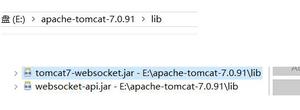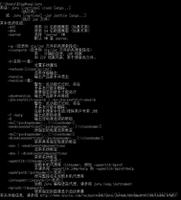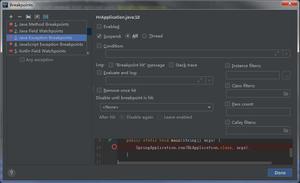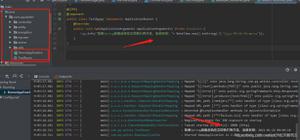使用socket.io的React-Redux和Websockets
我是React-Redux的新技术,希望在某些实现方面对您有所帮助。
我想用套接字(socket.io)实现一个聊天应用程序。首先,用户必须注册(我在服务器端使用通行证),然后,如果注册成功,则用户必须连接到webSocket。
我认为最好的办法是对所有操作使用管道之类的中间件,并根据获取中间件的操作类型来执行不同的操作。
如果操作类型为AUTH_USER,则创建客户端-服务器连接并设置所有将来自服务器的事件。
如果将操作类型MESSAGE发送到服务器,则消息。
代码段:
import { AUTH_USER, MESSAGE } from '../actions/types';import * as actions from 'actions/socket-actions';
import io from 'socket.io-client';
const socket = null;
export default function ({ dispatch }) {
return next => action => {
if(action.type == AUTH_USER) {
socket = io.connect(`${location.host}`);
socket.on('message', data => {
store.dispatch(actions.addResponse(action.data));
});
}
else if(action.type == MESSAGE && socket) {
socket.emit('user-message', action.data);
return next(action)
} else {
return next(action)
}
}
}
import {createStore, applyMiddleware} from 'redux';import socketMiddleware from './socketMiddleware';
const createStoreWithMiddleware = applyMiddleware(
socketMiddleware
)(createStore);
const store = createStoreWithMiddleware(reducer);
<Provider store={store}>
<App />
</Provider>
您如何看待这种做法,这是一种更好的实施方法吗?
回答:
我目前正在开发一个开源聊天应用程序。
通过将操作与中间件分离,甚至将套接字客户端与中间件分离,您可以做得更好。因此,结果如下:
- ->每个请求的REQUEST,SUCCESS,FAILURE类型(不是必需的)。
- ->存储不同状态
- ->发送动作以连接/断开连接/发出/监听。
- ->处理您的操作,并将当前操作传递或不传递给套接字客户端
- ->套接字客户端(socket.io)。
下面的代码取材于正在开发的真实应用程序(有时需要进行少量编辑),它们足以应付大多数情况,但某些东西(例如SocketClient)可能未必100%完整。
您希望动作尽可能简单,因为它们通常是重复的工作,并且您最终可能会拥有很多动作。
export function send(chatId, content) { const message = { chatId, content };
return {
type: 'socket',
types: [SEND, SEND_SUCCESS, SEND_FAIL],
promise: (socket) => socket.emit('SendMessage', message),
}
}
注意,套接字是一个参数化函数,通过这种方式,我们可以在整个应用程序中共享相同的套接字实例,而不必担心任何导入(稍后将说明如何执行此操作)。
我们将使用与erikras / react-redux-universal-hot-
example示例类似的策略,但是将它用于套接字而不是AJAX。
我们的套接字中间件将仅负责处理套接字请求。
中间件将操作传递到套接字客户端,并调度:
- REQUEST(操作
types[0]):正在请求(action.type发送到减速器)。 - SUCCESS(操作
types[1]):在请求成功时(action.type服务器响应action.result发送到reducer)。 - FAILURE(操作
types[2]):根据请求失败(action.type以及服务器响应action.error发送到减速器)。
export default function socketMiddleware(socket) { // Socket param is the client. We'll show how to set this up later.
return ({dispatch, getState}) => next => action => {
if (typeof action === 'function') {
return action(dispatch, getState);
}
/*
* Socket middleware usage.
* promise: (socket) => socket.emit('MESSAGE', 'hello world!')
* type: always 'socket'
* types: [REQUEST, SUCCESS, FAILURE]
*/
const { promise, type, types, ...rest } = action;
if (type !== 'socket' || !promise) {
// Move on! Not a socket request or a badly formed one.
return next(action);
}
const [REQUEST, SUCCESS, FAILURE] = types;
next({...rest, type: REQUEST});
return promise(socket)
.then((result) => {
return next({...rest, result, type: SUCCESS });
})
.catch((error) => {
return next({...rest, error, type: FAILURE });
})
};
}
唯一可以加载和管理socket.io-client的程序。
[可选](请参阅代码下面的1)。
关于socket.io的一个非常有趣的功能是您可以得到消息确认,这是在执行HTTP请求时的典型答复。我们可以使用它们来验证每个请求是否正确。请注意,为了利用此功能,服务器socket.io命令还必须具有此最新的确认参数。
import io from 'socket.io-client'; // Example conf. You can move this to your config file.
const host = 'http://localhost:3000';
const socketPath = '/api/socket.io';
export default class socketAPI {
socket;
connect() {
this.socket = io.connect(host, { path: socketPath });
return new Promise((resolve, reject) => {
this.socket.on('connect', () => resolve());
this.socket.on('connect_error', (error) => reject(error));
});
}
disconnect() {
return new Promise((resolve) => {
this.socket.disconnect(() => {
this.socket = null;
resolve();
});
});
}
emit(event, data) {
return new Promise((resolve, reject) => {
if (!this.socket) return reject('No socket connection.');
return this.socket.emit(event, data, (response) => {
// Response is the optional callback that you can use with socket.io in every request. See 1 above.
if (response.error) {
console.error(response.error);
return reject(response.error);
}
return resolve();
});
});
}
on(event, fun) {
// No promise is needed here, but we're expecting one in the middleware.
return new Promise((resolve, reject) => {
if (!this.socket) return reject('No socket connection.');
this.socket.on(event, fun);
resolve();
});
}
}
在应用启动时,我们初始化SocketClient并将其传递到商店配置。
const socketClient = new SocketClient();const store = configureStore(initialState, socketClient, apiClient);
我们将socketMiddleware带有新初始化的的添加SocketClient到商店中间件(还记得我们告诉您的参数,我们稍后会解释吗?)。
export default function configureStore(initialState, socketClient, apiClient) { const loggerMiddleware = createLogger();
const middleware = [
...
socketMiddleware(socketClient),
...
];
没什么特别的=您通常会做什么。
const SEND = 'redux/message/SEND';const SEND_SUCCESS = 'redux/message/SEND_SUCCESS';
const SEND_FAIL = 'redux/message/SEND_FAIL';
export default function reducer(state = {}, action = {}) { switch(action.type) {
case SEND: {
return {
...state,
isSending: true,
};
}
default: {
return state;
}
}
}
它可能看起来像很多工作,但是一旦完成设置,就值得了。您的相关代码将更易于阅读,调试,并且不易出错。
您也可以通过AJAX API调用遵循此策略。
以上是 使用socket.io的React-Redux和Websockets 的全部内容, 来源链接: utcz.com/qa/418396.html








